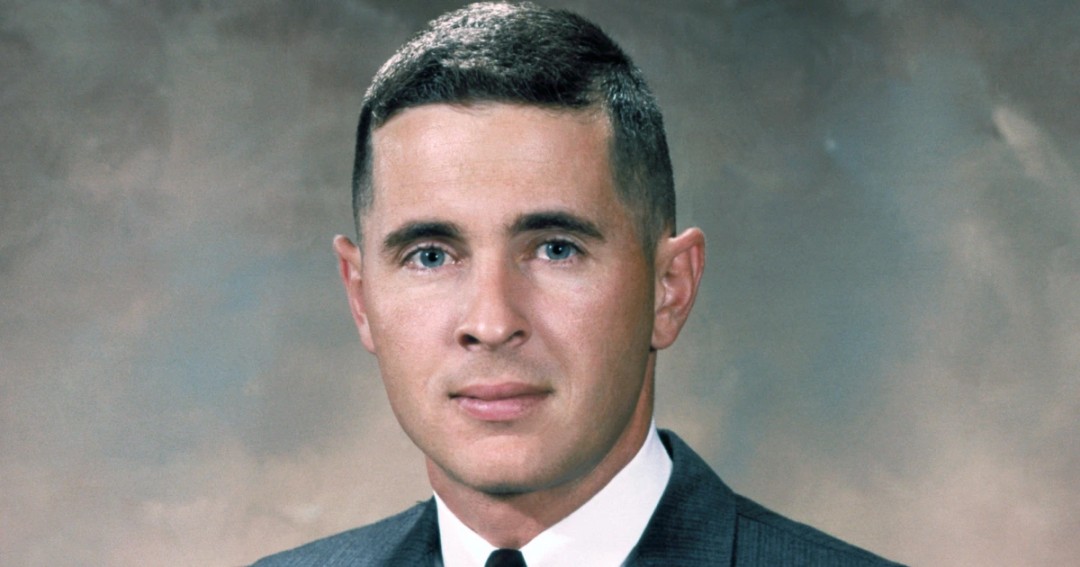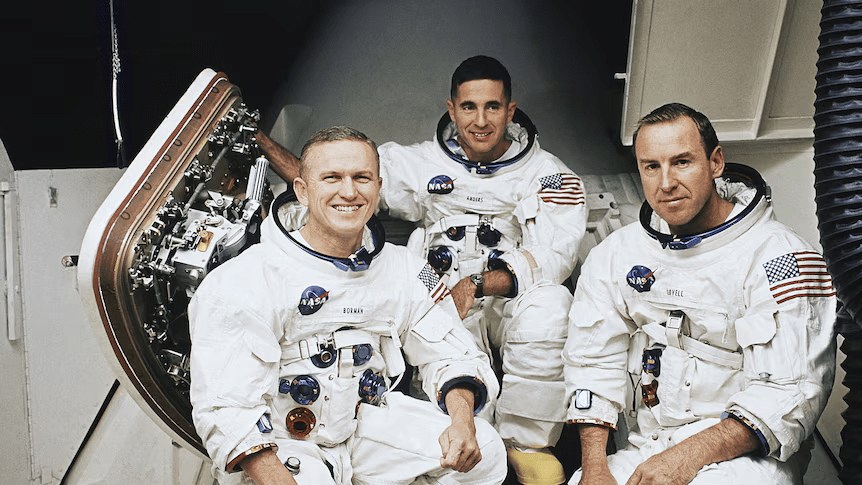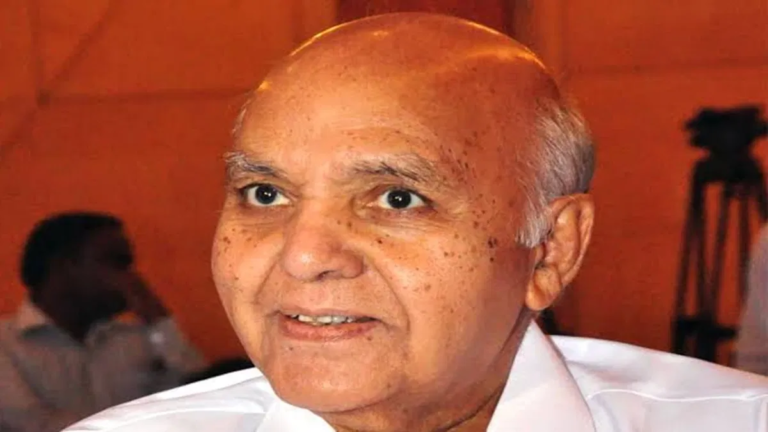William Anders – The Man Behind the Iconic “Earthrise” Photo [2024]

William Anders is a name that resonates deeply within the history of space exploration. As one of the three astronauts on the groundbreaking Apollo 8 mission, Anders captured the iconic “Earthrise” photograph, which forever changed humanity’s perception of our planet and our place in the universe. This article delves into the life, career, and legacy of William Anders, highlighting his contributions to space exploration and the world.
- National Donut Day 2024 (The Sweetest Day of the Year): How to Make the Most
- Unveiling the Future: A Sneak Peek into the Thriving Business Quarters of 2024
- Top 10 most expensive ring in the world
- Katy United States: Exploring The Small Town Charm with Big City Convenience
- Loan Disclaimers in the United States: A Guide for Borrowers
William Anders: Early Life and Career
Early Life
William Alison Anders was born on October 17, 1933, in Hong Kong to a military family. His father, Arthur Anders, was a naval officer, which meant the family moved frequently during William’s childhood. These early experiences fostered a strong sense of adventure and curiosity in Anders. Living in various parts of the world, including the Philippines and the United States, Anders developed a keen interest in aviation and technology from a young age.
Education and Military Training
After completing high school, Anders attended the United States Naval Academy, where he graduated in 1955 with a Bachelor of Science degree. His time at the academy was marked by rigorous training and academic challenges, which prepared him for his future roles. Following his graduation, he was commissioned as a second lieutenant in the United States Air Force.
Anders pursued further education at the Air Force Institute of Technology, earning a Master of Science degree in Nuclear Engineering in 1962. This specialized training equipped him with the technical skills necessary for the complex tasks he would later undertake as an astronaut.
William Anders: Path to Becoming an Astronaut
Early Career and Military Service
William Anders began his military career as a fighter pilot, where he honed his skills in various aircraft. His proficiency in flying and his engineering background made him an ideal candidate for more technical and challenging roles within the Air Force. During this period, Anders also worked on the development of advanced nuclear reactors, gaining valuable experience in cutting-edge technology.
Joining NASA
In 1963, NASA was looking for astronauts who not only had piloting skills but also strong technical backgrounds. Anders, with his combined expertise in engineering and piloting, caught NASA’s attention. He was selected as part of NASA’s third group of astronauts, a prestigious and highly competitive selection that included future Apollo astronauts like Buzz Aldrin and Michael Collins.
William Anders: Apollo 8 Mission

Mission Overview
Apollo 8 was a historic mission for several reasons. It was the first manned spacecraft to leave Earth’s orbit, reach the Moon, orbit it, and return safely to Earth. Launched on December 21, 1968, the mission was critical in paving the way for the eventual Moon landing of Apollo 11. The successful execution of Apollo 8 demonstrated that the United States was capable of achieving President John F. Kennedy’s goal of landing a man on the Moon before the end of the decade.
Crew and Roles
William Anders, along with Frank Borman and Jim Lovell, made up the crew of Apollo 8. Each astronaut had specific roles: Frank Borman served as the mission commander, Jim Lovell as the command module pilot, and William Anders as the lunar module pilot. Although the lunar module was not used in this mission, Anders’ responsibilities were crucial for the mission’s success.
Anders’ tasks included taking high-resolution photographs of the lunar surface and Earth, performing navigation and observation duties, and conducting experiments. His training as an engineer and a pilot made him particularly well-suited for these tasks.
The “Earthrise” Photograph

The Iconic Moment
On December 24, 1968, during their fourth orbit around the Moon, the Apollo 8 crew experienced a moment that would become one of the most significant in space exploration history. As they emerged from the far side of the Moon, William Anders saw the Earth rising above the lunar horizon. He quickly grabbed a Hasselblad camera and captured the image that would become known as “Earthrise.”
Technical Details and Impact
The “Earthrise” photograph was taken with a Hasselblad 500 EL camera equipped with an 80mm lens and color film. The camera was specifically chosen for its high-quality lenses and reliability in the harsh conditions of space. The photograph shows Earth as a small, vibrant blue and white sphere against the vast, dark expanse of space and the gray, barren lunar surface.
The image had a profound impact on public perception. It was one of the first times humanity saw our planet from space, highlighting its beauty, fragility, and isolation. The photograph became an iconic symbol for the environmental movement, emphasizing the need for global cooperation and conservation. It also underscored the achievements of space exploration and the potential for future discoveries.
William Anders: Later Career and Contributions
Post-NASA Career
After the Apollo 8 mission, William Anders continued to contribute significantly to science, technology, and public service. He served as the Executive Secretary of the National Aeronautics and Space Council, where he helped shape U.S. space policy. In this role, Anders was instrumental in promoting the development of advanced space technology and advocating for the continued exploration of space.
In 1973, Anders left NASA to join the Atomic Energy Commission, where he served as a Commissioner. His expertise in nuclear engineering was valuable in overseeing the nation’s nuclear programs and ensuring their safety and efficiency. From 1976 to 1977, Anders served as the U.S. Ambassador to Norway, strengthening diplomatic relations and promoting scientific and technological collaboration between the two countries.
Industry Leadership
Anders also held various executive positions in the aerospace industry. He worked at General Electric as Vice President and General Manager of the Nuclear Products Division, where he was responsible for overseeing the development and production of nuclear power systems. Later, he joined Textron, a multinational conglomerate, where he served as Executive Vice President and then Vice Chairman.
Throughout his career, Anders was known for his leadership, technical expertise, and commitment to advancing science and technology. His contributions to both the public and private sectors had a lasting impact on the fields of aerospace and nuclear energy.
Awards and Recognitions
William Anders’ extensive career earned him numerous awards and honors. He received the NASA Distinguished Service Medal, the highest award given by the agency, in recognition of his contributions to the Apollo 8 mission. In 1969, he was awarded the Congressional Space Medal of Honor, one of the highest civilian honors in the United States, for his extraordinary achievements in space exploration.
Anders was also inducted into the U.S. Astronaut Hall of Fame, which celebrates the achievements of astronauts who have made significant contributions to space exploration. In addition to these honors, he received various other awards from scientific and engineering organizations, highlighting his impact on multiple fields.
Legacy
Influence on Space Exploration
William Anders’ legacy extends far beyond his contributions to the Apollo 8 mission. The “Earthrise” photograph he took inspired generations to look at our planet differently, emphasizing the need for global cooperation and environmental stewardship. The image continues to be a powerful symbol of our shared humanity and the importance of preserving our planet.
Impact on Future Generations
Anders’ dedication to science, exploration, and service has influenced future generations of astronauts, engineers, and space enthusiasts. His work helped pave the way for subsequent space missions, including the successful Apollo 11 Moon landing. His commitment to advancing technology and promoting scientific inquiry serves as a model for aspiring scientists and engineers.
In addition to his professional achievements, Anders has been involved in various educational and outreach activities, sharing his experiences and knowledge with students and the public. His efforts to inspire and educate future generations ensure that his legacy will continue to have a lasting impact.
William Anders: Personal Life and Reflections
Personal Life
William Anders has always been known for his humility and dedication to his family. He married Valerie Hoard in 1955, and the couple has six children. Despite his demanding career, Anders has always prioritized his family, often speaking about the importance of their support throughout his journey.
Reflections on Space Exploration
In interviews and public appearances, Anders often reflects on the significance of space exploration and the changes it brought to his perspective on life and our planet. He has spoken about the profound impact of seeing Earth from space, describing it as a life-changing experience that underscored the interconnectedness of all humanity.
Conclusion
William Anders’ life and career epitomize the spirit of exploration and innovation. From his early days in the military to his pivotal role in the Apollo 8 mission and beyond, Anders has left an indelible mark on space exploration history. The “Earthrise” photograph is more than just an image; it’s a reminder of our shared humanity and the boundless possibilities of space exploration.
As we continue to explore the cosmos, the legacy of pioneers like William Anders will guide and inspire us. His contributions to science, technology, and public service serve as a testament to the power of human ingenuity and the enduring quest for knowledge.
- National Donut Day 2024 (The Sweetest Day of the Year): How to Make the Most
- Unveiling the Future: A Sneak Peek into the Thriving Business Quarters of 2024
- Top 10 most expensive ring in the world
- Katy United States: Exploring The Small Town Charm with Big City Convenience
- Loan Disclaimers in the United States: A Guide for Borrowers






